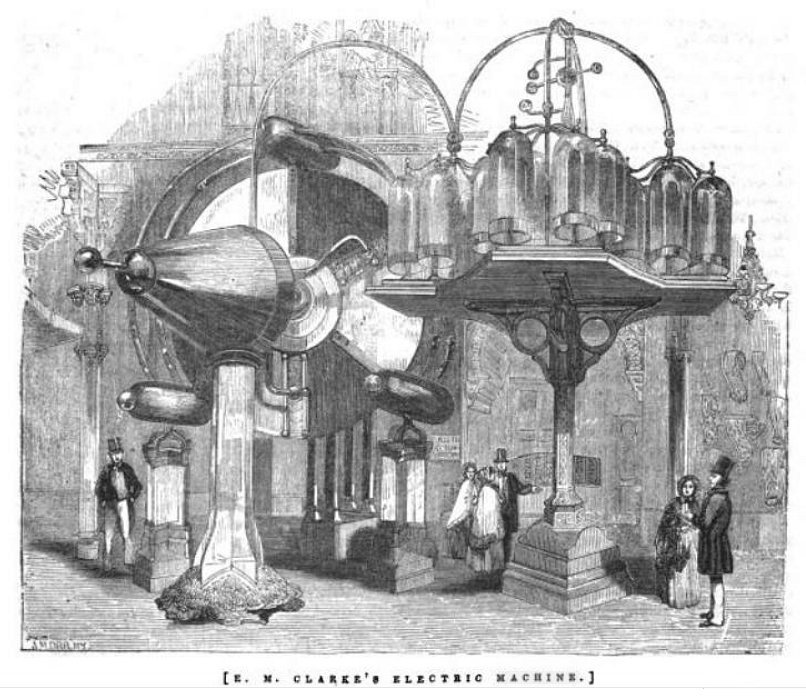Similar smaller machines, with the
conventional two rubbers and collectors, were built by Clarke too.
References:
[1] K. G. Beauchamp, "Exhibiting electricity," IET, 1997.
[2] "The great electrical machine at the Royal Panopticon, London," The
New York Journal, P. D. Orvis, Vol III, 1854. P. 155.
[3] James Wylde, "The circle of the sciences," Volume 1, Part 1,
1862.p. 171, 242.
[4] Haydn, J., "Haydn's dictionary of dates relating to all ages and
nations: for universal reference", E. Moxon and Co., 1866.


